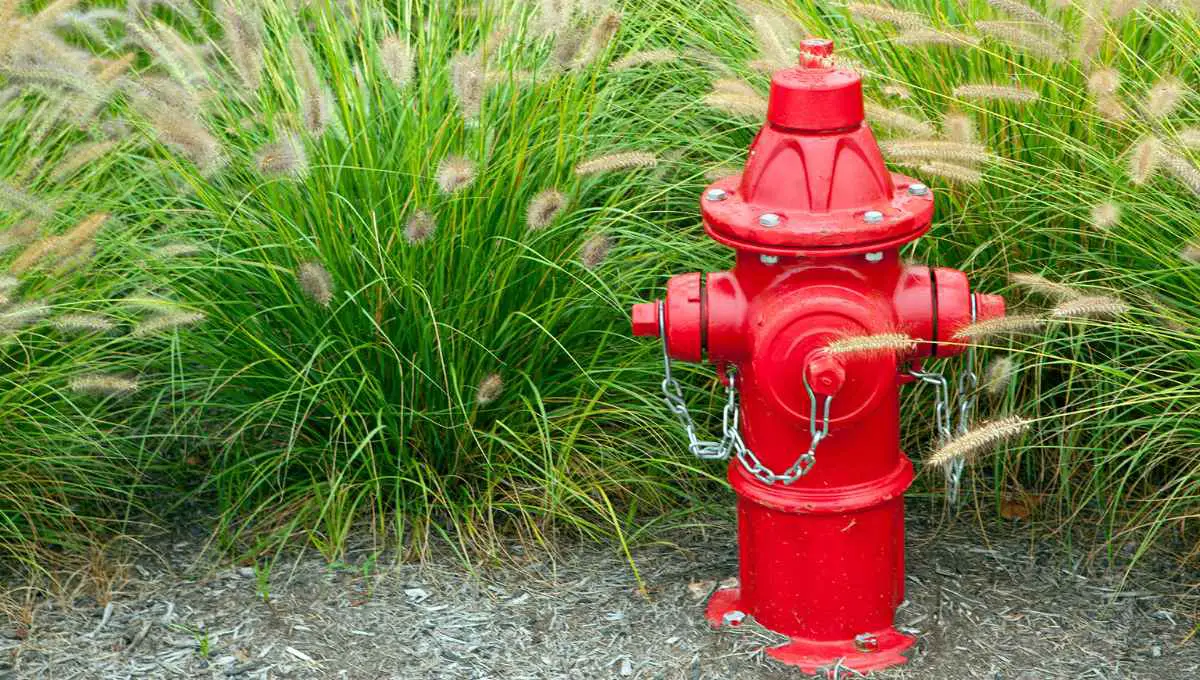Fire Hydrant on My Property (Your Rights & What You Can Do)

Fire hydrants can be seen on every block throughout residential and commercial areas. For some, they hold a sense of nostalgia, while for others, they can be an eyesore – nevertheless, when fire hydrants are placed on properties, they leave some landowners scratching their heads.
You likely don’t have any rights regarding the usage or removal of a fire hydrant on your property. However, having a fire hydrant on your property could make your house the safest on the block, even though the hydrant is probably the city’s property.
In this article, we’ll discuss the pros and cons of having a fire hydrant on your property. We’ll also examine your responsibilities in maintaining your yard around the hydrant.
This post contains affiliate links from Amazon and other stores. This means Yard Blogger may earn a commission if you make a purchase using any of our links. Please refer to our full affiliate disclosure policy for full details.
Here’s a Quick Pro Tip!
Since there isn’t much that you can do about the fire hydrant on your property, you can adapt your landscaping vision to pull the attention away from the hydrant. Some homeowners even incorporate the hydrant in their landscaping, ensuring it stays visible and accessible at all times.
Our favorite landscaping decor from Amazon:
1. Fountain– a beautiful centerpiece for your decor
2. Pebbles– used to form a pathway to your front door
3. Flowers– plant them around your house and along the footpath
Fire Hydrant Ownership and Responsibility
It might surprise you that you don’t actually own the fire hydrant on your property. In most cases, fire hydrants are owned by the city municipality or by the fire department.
This means that you, as a civilian, should not tamper with the hydrant under any circumstances because you will face severe penalties.
On the other hand, you would be responsible for keeping at least 3 feet of space clear around the hydrant. This means clearing any weeds and shoveling snow to keep the hydrant accessible to firefighters.
Private vs. Public Fire Hydrants
Some cities allow private organizations to own fire hydrants to increase safety and prevent potential damages in an area. The biggest difference between private and public hydrants is the maintenance and service thereof.
Many Home Owners’ Associations install hydrants on their properties, but they are responsible for maintaining these hydrants. Usually, these organizations hire fire services to inspect and maintain their hydrants.
Sometimes private fire hydrants are installed by a homeowner and passed on to the next homeowner. If you have a hydrant on your property, you should check your deed for an indication of the ownership of the hydrant.
You might be responsible for the flow test and maintenance of the hydrant as well if it is a private hydrant. Your local municipal office could also tell you if the hydrant on your property is owned by the city or by you.
You might also enjoy our post on Whether a Utility Pole Can Be Moved
Advantages of Having a Fire Hydrant on Your Property
- Your house is a lot safer than those without hydrants since firefighters would have immediate access to the water system. In warmer states which are prone to fires, a fire hydrant nearby could save your house.
- Some insurance companies also reduce their rates if they notice that your property has a hydrant. This ties directly to the safety advantage, and you can expect a slight discount.
- A fire hydrant in front of your property guarantees that no one will park in front of your house. You’ll always have a clear and unobstructed view since it is illegal to block a hydrant.
Disadvantages of Having a Fire Hydrant on Your Property
- As we mentioned, there’s a 99% chance that you are responsible for keeping the area surrounding the hydrant clear of any obstacles. This could seriously interfere with your landscaping vision, and there’s not much you can do about it.
- You cannot park in front of your own property. It can be an inconvenience if you have guests over and they have to park down the street.
- The fire hydrant is not your property, and you won’t be able to have it removed either. If you have one on your property, you’re pretty much stuck with it.
If you tamper with a hydrant or accidentally damage it, you will be held responsible for the cost of repairs. This could range from $200 for maintenance up to $2000 for a replacement.
Fire Hydrant Parking and Property Laws
If you own a property, you can surely park in front of it, right? Well, yes, but there are a few exceptions, one of which is a fire hydrant.
The law requires that you leave a space of 15 feet on either side of a hydrant open. So, technically there would be a 30-foot space in front of your property that would be a ‘no parking’ zone. This law allows firefighters to have access to all available fire hydrants in the case of an emergency.
The curb and road next to a fire hydrant should be painted to show drivers that it’s illegal to park there. If you have a hydrant on your property, but your curb is not painted, you should contact a city clerk to have it done.
Fire Hydrant Tax
Fire hydrant tax is when the city deducts a certain percentage of our income and uses it for the maintenance and upkeep of the fire hydrants in your area.
This form of tax is uncommon since it got a lot of pushback when it was first introduced.
These days, the upkeep of hydrants is deducted from the budget of firefighters or the water service, although the law might be slightly different in your state.
How to Make a Hydrant Look Better
A fire hydrant on your property can be an eyesore; to make matters worse, they’re usually painted bright colors.
We’ve taken the liberty of coming up with some decorating ideas to make your hydrant inconspicuous.
It’s crucial to remember that a fire hydrant must be visible from the street at all times, so you can’t simply close it in a fence.
No matter how annoying the bright color of the hydrant is, you’re not allowed to paint it. Fire hydrants are painted in specific colors to be easily seen but also for another important reason.
Fire Hydrant Color Code
- Red – less than 500 gallons per minute flow capacity
- Orange – maximum 1000 gallons per minute flow capacity
- Green – maximum 1500 gallons per minute flow capacity
- Blue – 1500 gallons or above per minute flow capacity
Planting Flowers
If the bright color of the fire hydrant on your property is particularly annoying, you could try to plant flowers of the same color. This will help the hydrant to ‘blend in’ while still being visible to firefighters.
For the classic red hydrants, you could plant red roses or anthuriums. Green hydrants are the easiest to blend in since they match any tree or plant already in your yard.
For orang hydrants, you could plant these French Marigolds. Lastly, for the light blue hydrants, you could plant forget-me-not seeds.
The ideal would be to shift the eye away from the hydrant and to another part of your lawn. Whether it be pretty flowers, a big tree, or a beautiful fountain, anything to attract the eye of passersby, don’t let a hydrant ‘ruin’ your landscaping.
Each city has different laws, but most allow small flowers and low shrubbery around a hydrant. The only caveat is that it must be visible and accessible from the street in all directions.
So any tall trees or fences should not be planted in front of the hydrant.
To be on the safe side, you should always leave a 3-foot clearance around a fire hydrant. Follow this rule if you plan to add a driveway or any other permanent structure to your yard.
Final Thoughts
Fire hydrants are part of American culture, and many have nostalgic memories associated with a hydrant. We would recommend focussing on the benefits of having a hydrant on your property and keeping the area accessible to firefighters.









